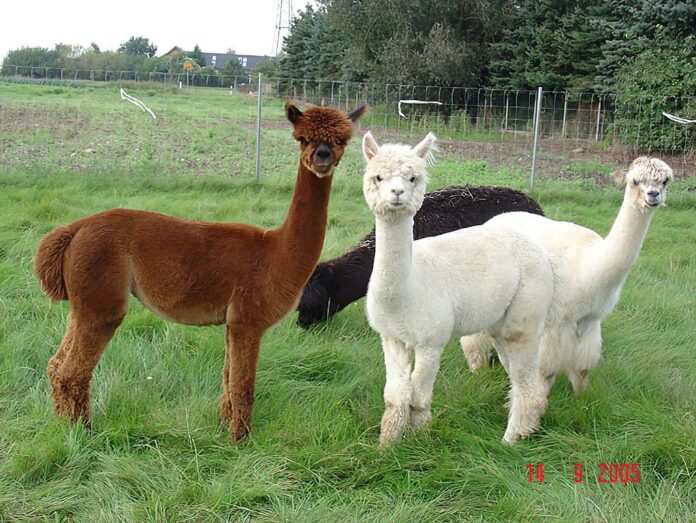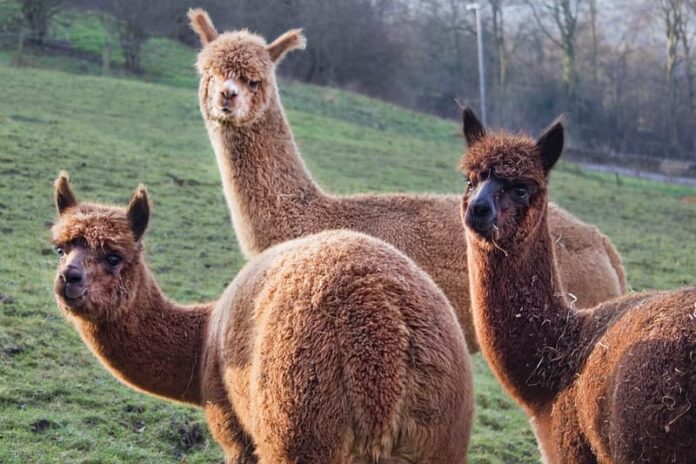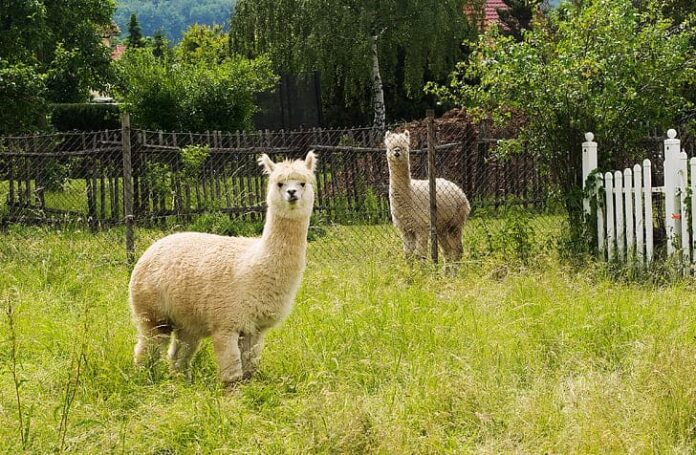Alpaca packs with super adorable face that looks so happy all the time, making them very popular. People often confused alpacas with llamas due to their similar appearance since they are closely related to each other. There are two breeds of alpaca including Huacaya Alpaca and Suri Alpaca, and both of them are so cute. For those who are curious about alpacas, let’s find out more about them below with us.
1Appearance

Alpacas have floppy tufts, innocent eyes, adorable smiles, and slender necks, making them the cutest member of the Camelidae family. At the same time, alpacas are also the smallest members of the camel family. Their average height is 91.4 centimeters (3 feet) at the shoulder and between 120 to 225 centimeters (4 – 7 feet) long. Alpacas are actually very small so they are not ideal as pack animals to carry loads at all. One of the things that we noticed apart from their cute faces is their coat which looks soft even from the distance. Alpacas annually shed their fur, and those fur makes one of the silkiest and most versatile fibers. In fact, their fur is said to be more breathable than thermal knits, stronger than mohair, and warmer than goose down. Huacaya alpacas have dense crimped coats while Suri alpacas have longer and more prized wool.
2Breeding

There is also an alpaca-llama hybrid known as Llalpaca with unique long fleece which is so beautiful. Female alpacas can reproduce at 12 to 15 months old while males are ready to mate at around 3 years old. Generally, the gestation period for alpacas is between 242 to 345 days which is almost a whole year. A female alpaca gives birth to one single baby alpaca only, and it takes her around 7 hours to give birth. The mother instinctively gives birth between 10AM and 2PM with clear purposes in mind. She wants to make sure that her newborn has time to dry off, stand up, and suckle milk before the temperature drops. A baby alpaca is called a “cria”, and it takes between 6 to 8 months to wean. Alpacas typically live up to 20 years, and the oldest known alpaca is 27 years old.
3Behavior

Alpacas are calm and docile, making them one of the best therapy animals these days. Just like llamas, alpacas hum to communicate as it is the most common sound that they make. An alpaca will softly hum when they are bored, cautious, content, curious, distressed, or worried. When in danger or startled, one of them will announce a threat with a staccato alarm call. Then the rest of the members will follow suit to either escape or confront the predators. More than that, they are very social creatures with friendly and gentle personalities along with curious minds. As highly trainable and smart animals, each alpaca has its own personality which is very fascinating. One trait that they all share is that they don’t like to be alone. They actually can and enjoy living in herds that include animals of different species like goats, llamas, and sheep.
One notable behavior of alpacas is their tendency to use a communal dung pile within their packs. As a matter of fact, they designate only a few places in the pasture where they defecate. Normally, alpacas poop in tidy mounds in certain areas that they choose away from where they graze. And guess what, they will also queue in line waiting for their turns as well. Because of this behavior, training them to potty is also very easy for those who keep them as pets at home. Behind the adorable faces, alpacas also spit when they are distressed or feel threatened. Sometimes they will also spit at each other when they are competing for food or trying to establish dominance within the pack. Do alpacas spit at people? An alpaca won’t bite or spit at people unless they have been abused so don’t worry if you don’t harm them.
4Feeding & Habitat

Since these adorable fluff balls are herbivores, they only eat vegetation. Their main diet is grass but they also eat barks, hay, leaves, stems, and more to gain minerals and proteins. In case you want to give them extra treats, alpacas also love apples, lettuce, and old fresh weeds. Depending on their unique personalities, each alpaca has different favorite treats. Because they don’t have teeth in the top front of their mouths, they have the appearance of having an underbite. They have a three-chambered stomach that digests the food efficiently although they don’t really eat much like other grazers. An alpaca only eats 1% or 2% of their body weight each day which costs roughly $220 per year.
Not different from other members of their family, alpacas are also native to the Andes. These fluffy animals are very adaptable so it is easy to export and breed them for different parts of the world. As resilient animals, alpacas can live in both very cold and very hot climates if provided with proper care. This is why you can also find them on farms in Australia, the Netherlands, New Zealand, the United States, and more. Despite being widespread, 99% of the alpaca population in the world is in South America. There are no wild alpacas, so their habitat is often farmland.
5Use

Alpacas are thought to have been domesticated over 6,000 years ago by the Incas who raised them for their fleece. Back in the old days, alpaca fiber was reserved exclusively for the elite and noble due to its high quality. Today, people still raise them mainly for their soft fleece but it is for everyone, not just the wealthy ones. People use their hypoallergenic, flame-resistant, and water-resistant fiber for a wide range of purposes. Not to mention that alpaca fiber comes in 22 different natural colors from reddish-brown to rose-gray, their fiber is amazing. Being the second strongest animal fiber, their fur is a very prized fiber for artisans and crafters out there.
Related Post: Things You Don’t Know About Llamas




